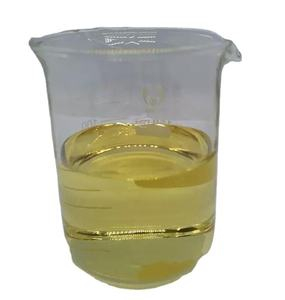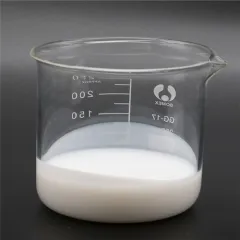Introduction to Surfactants
Surfactants, or surface-active representatives, are substances that lower the surface stress between two fluids, a gas and a fluid, or a fluid and a solid. They play a crucial function in various industries, from cleansing items to drugs. Recognizing surfactants’ homes and applications can unlock new opportunities for development and effectiveness.
(Surfactants)
Sorts of Surfactants and Their Differences
Anionic Surfactants
Anionic surfactants carry an adverse charge on their hydrophilic end. This kind is understood for its outstanding detergency and foaming buildings. Typical instances include salt lauryl sulfate (SLS) and sodium laureth sulfate (SLES), extensively used in shampoos and cleaning agents. Their effectiveness at eliminating oils and dust makes them prominent in cleansing products. Nevertheless, they can be annoying to the skin and eyes.
Cationic Surfactants
Cationic surfactants have a favorable charge on their hydrophilic end. They are much less common in cleansing products due to their restricted ability to remove dirt. Instead, cationic surfactants are valued for their antimicrobial properties and are commonly found in fabric conditioners and conditioners. Examples consist of benzalkonium chloride and cetrimonium bromide.
Nonionic Surfactants
Nonionic surfactants do not have an electric fee. They are flexible and secure in both acidic and alkaline atmospheres. These surfactants are commonly made use of in household and commercial cleansers because of their good solubilizing and emulsifying buildings. Examples consist of alcohol ethoxylates and alkylphenol ethoxylates. They are likewise utilized in the food industry as emulsifiers.
Amphoteric Surfactants
Amphoteric surfactants possess both positive and unfavorable costs, making them sensitive to pH changes. At low pH degrees, they act like cationic surfactants, while at high pH degrees, they act like anionic surfactants. This versatility makes them mild and effective in personal care products such as baby hair shampoos and facial cleansers. Examples consist of cocamidopropyl betaine and lauriminodipropionate.
Applications Throughout Various Sectors
Surfactants find applications in numerous industries due to their one-of-a-kind properties. In the cleansing sector, they improve the elimination of dust and oils, making them important in detergents and soaps. Personal care items take advantage of surfactants’ cleaning and conditioning buildings, supplying customers with efficient skin care solutions. The textile sector makes use of surfactants for coloring and finishing textiles, making sure lively colors and soft appearances. Furthermore, surfactants are crucial in the oil and gas sector, where they enhance the recuperation of crude oil by reducing interfacial tension in between oil and water. Each field benefits from the versatility and performance-enhancing capacities of surfactants.
( Surfactants)
Market Patterns and Development Drivers
The demand for surfactants is raising as brand-new applications are discovered. Advances in producing procedures boost top quality and lower expenses. Testing ensures products carry out as expected, developing far better items. Firms embracing these modern technologies offer higher-quality surfactants. Consumer recognition about the benefits of more efficient and environmentally friendly items drives rate of interest in those using sophisticated surfactants. Advertising and marketing efforts focus on educating customers about the benefits of these ingenious surfactants, such as enhanced effectiveness and reduced ecological impact.
Difficulties and Limitations
One difficulty with surfactants is their possible environmental impact. Some kinds, particularly non-biodegradable surfactants, can accumulate in ecosystems, leading to contamination. An additional problem is expense. Top notch, environmentally friendly surfactants can be costly. Nevertheless, the benefits typically exceed the prices. Products made with advanced surfactants last longer and perform far better. Firms should demonstrate the value of these surfactants to validate the cost. Security concerns likewise exist, as incorrect handling or defects can lead to health and wellness risks. Research study remains to guarantee risk-free usage. Clear communication concerning safety and security constructs trust fund.
Future Prospects: Developments and Opportunities
The future looks assuring for surfactants. A lot more research will certainly locate means to improve their efficiency and decrease ecological impact. Innovations such as bio-based and biodegradable surfactants intend to enhance sustainability while maintaining security and performance. As markets seek greener and much more reliable services, surfactants will play an essential duty. Their capacity to provide trustworthy and functional performance makes them beneficial. New developments might open added applications. The capacity for development in different fields is substantial.
End of Record
This write-up offers an extensive yet simple exploration of surfactants, highlighting their value across different industries. Each section concentrates on specific facets of surfactants, making sure clearness and convenience of comprehending while maintaining depth and professionalism and reliability.
Vendor
TRUNNANO is a supplier of Surfactants with over 12 years of experience in nano-building energy conservation and nanotechnology development. It accepts payment via Credit Card, T/T, West Union and Paypal. Trunnano will ship the goods to customers overseas through FedEx, DHL, by air, or by sea. If you want to know more about Chromium Oxide, please feel free to contact us and send an inquiry(sales5@nanotrun.com).
Tags: Surfactants, sodium lauryl sulfate, sodium dodecyl sulfate
All articles and pictures are from the Internet. If there are any copyright issues, please contact us in time to delete.
Inquiry us
Error: Contact form not found.


